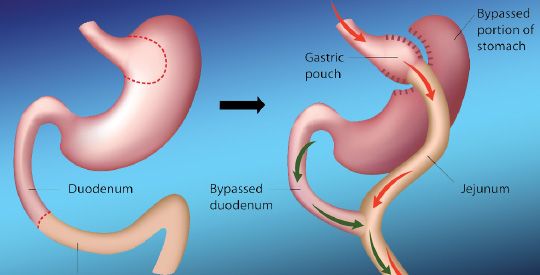Integrating Robotics Technology In Laparoscopic Roux-en-Y Gastric Bypass Surgery
In the realm of surgical innovation, robotics technology has emerged as a transformative force, revolutionizing procedures across various medical specialties. Laparoscopic Roux-en-Y gastric bypass (LRYGB) surgery, a highly effective treatment for obesity and related comorbidities, is no exception to this trend. Integrating robotics into LRYGB procedures offers numerous advantages, including enhanced precision, improved outcomes, and reduced patient recovery time. This article explores the integration of robotics technology in LRYGB surgery, highlighting its benefits, challenges, and future implications.
The Evolution of LRYGB Surgery
Laparoscopic Roux-en-Y gastric bypass surgery has undergone significant evolution since its inception. Originally introduced as an open surgical procedure, it transitioned to a minimally invasive approach in the 1990s with the advent of laparoscopic techniques. This shift resulted in reduced surgical trauma, shorter hospital stays, and faster recovery times for patients. However, despite these advancements, traditional laparoscopic procedures still present certain limitations, including restricted dexterity, limited range of motion, and two-dimensional visualization.
Integrating Robotics Technology
Robotic-assisted surgery addresses these limitations by combining the advantages of minimally invasive techniques with the precision and maneuverability of robotic systems. In LRYGB surgery, robotic platforms such as the da Vinci Surgical System have gained prominence for their ability to overcome technical challenges associated with traditional laparoscopy. These systems offer several key features that enhance the surgeon’s capabilities:
Enhanced Visualization: Robotic systems provide three-dimensional high-definition imaging, offering surgeons a detailed view of the surgical field with improved depth perception. This enhanced visualization facilitates precise tissue dissection and suturing, crucial aspects of LRYGB surgery.
Articulated Instruments: Robotic surgical instruments offer greater degrees of freedom and range of motion compared to traditional laparoscopic instruments. This increased dexterity enables surgeons to maneuver more effectively within confined spaces, such as the abdominal cavity, enhancing their ability to perform complex procedures like LRYGB with greater precision.
Ergonomic Design: Robotic consoles are ergonomically designed to reduce surgeon fatigue and discomfort during prolonged procedures. The intuitive user interface allows for seamless instrument control, minimizing the learning curve associated with adopting new technologies.
Benefits of Robotic Integration in LRYGB Surgery
The integration of robotics technology into LRYGB surgery offers a multitude of benefits for both patients and surgeons:
Improved Surgical Outcomes: Robotic-assisted LRYGB procedures have been associated with lower rates of complications, such as leaks and wound infections, compared to traditional laparoscopy. The enhanced precision and control afforded by robotic systems contribute to more accurate surgical techniques and superior outcomes for patients.
Reduced Hospital Stay: Patients undergoing robotic LRYGB surgery typically experience shorter hospital stays and faster recovery times compared to those undergoing open or traditional laparoscopic procedures. This can lead to significant cost savings for healthcare providers and improved patient satisfaction.
Enhanced Safety Profile: Robotic systems incorporate advanced safety features, such as haptic feedback and real-time imaging, which help surgeons navigate complex anatomical structures with greater confidence and precision. This reduces the risk of inadvertent tissue damage and improves overall patient safety.
Challenges and Considerations
Despite the numerous advantages of robotic-assisted LRYGB surgery, several challenges must be addressed to optimize its implementation:
Cost: Robotic surgical systems represent a significant financial investment for healthcare institutions, including initial purchase costs, maintenance expenses, and training fees. Reimbursement policies and economic considerations may influence the widespread adoption of these technologies.
Training and Credentialing: Surgeons require specialized training and credentialing to proficiently use robotic systems in LRYGB surgery. Comprehensive education programs and simulation-based training are essential to ensure competency and minimize the risk of surgical errors.
Technical Limitations: While robotic platforms offer enhanced capabilities compared to traditional laparoscopy, they are not without limitations. Factors such as instrument size, port placement, and robotic arm collisions may present technical challenges during surgery and require careful consideration by the surgical team.
Future Directions
The integration of robotics technology in LRYGB surgery represents a paradigm shift in the field of bariatric surgery, with ongoing advancements poised to further optimize patient outcomes and surgical efficiency. Future developments may focus on refining robotic platforms to improve ergonomics, enhancing artificial intelligence algorithms for surgical assistance, and expanding the scope of robotic procedures to include revisional and complex cases.
Conclusion
Integrating robotics technology into Laparoscopic Roux-en-Y gastric bypass surgery has revolutionized the field of bariatric surgery, offering unprecedented precision, safety, and efficiency. While challenges remain, the benefits of robotic-assisted LRYGB procedures are undeniable, paving the way for continued innovation and improvement in surgical care. As technology continues to evolve, robotic surgery will undoubtedly play an increasingly prominent role in the management of obesity and metabolic disorders, ultimately improving the lives of countless patients worldwide.



